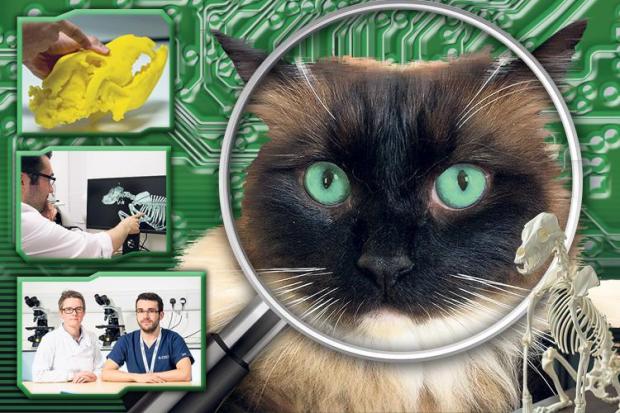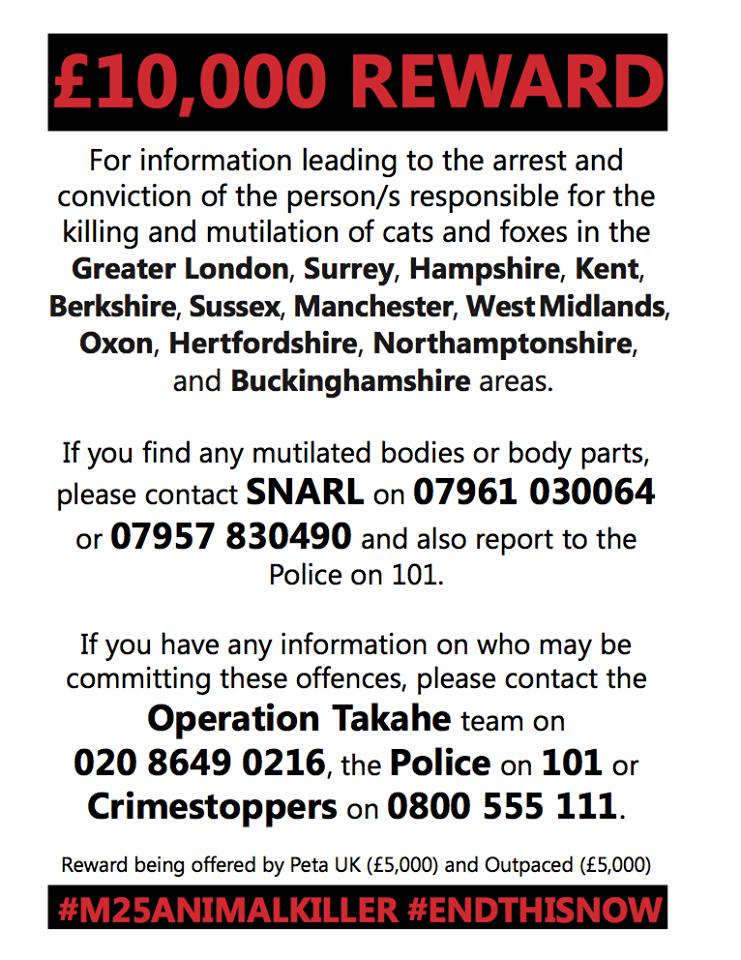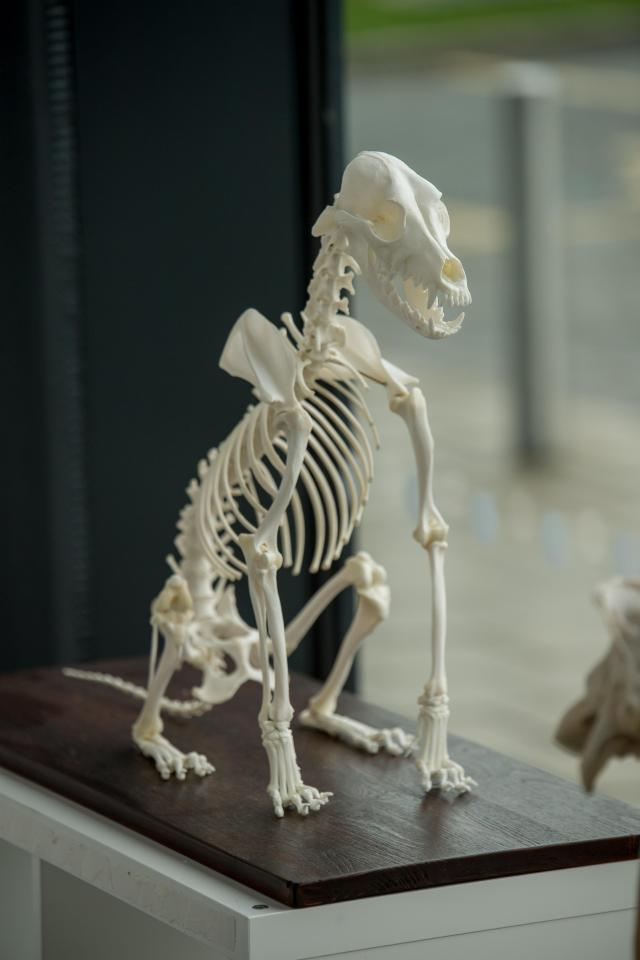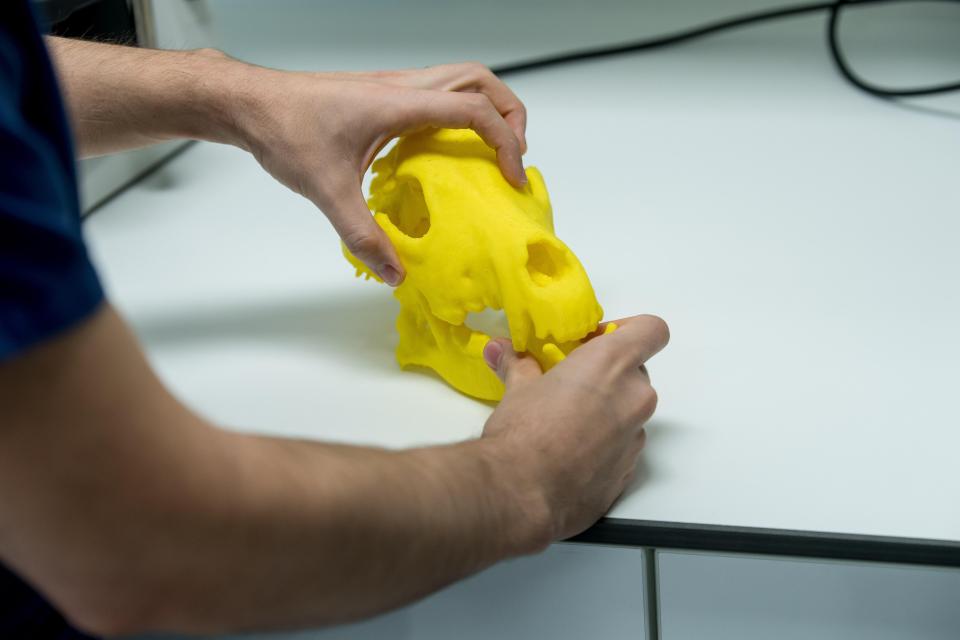Inside the UK’s first animal forensics lab where experts are working to nab the Croydon Cat Killer

THE latest dismembered body was found last week, outside a child’s pink Wendy house in a suburban back garden.
Police were called and confirmed the news — Teddy the rabbit appeared to be the latest victim of the serial pet killer.
More than 250 animals have been murdered by the so-called Croydon Cat Killer since 2014, but there is now new hope of finding the fiend thanks to pioneering work by the country’s only animal forensics lab.
The pets’ bodies have been shipped to the facility, set up just six months ago, ready for CSI vets to examine them for DNA evidence and other clues.
Lead forensic scientist Jo Millington, 44, used to work on human murder cases for the Home Office.
She said: “Homicide investigation used to be my bread and butter.
“There are plenty of ways to link an individual to an animal by using the methods we would normally use on humans.
“I found it absolutely ridiculous that this had never been done before.”
In its first few months, ArroGen Veterinary Forensics, at the University of Surrey in Guildford, has looked at crimes involving everything from pigeons to cows.
But the cat-killer investigation will be its most high-profile case.
And millions of fearful pet owners will be hoping that science will provide the breakthrough that a police offer of a £10,000 reward has so far failed to do.
The grisly killings, mostly of cats but some of foxes and now rabbits, began in Croydon, South London, in 2014, but soon spread across the South East.
There have now been cases as far afield as Manchester and the West Midlands.
Last month, before the sick attack on bunny Teddy in Harpenden, Herts, last Monday night, four cats and two foxes were dismembered in just seven days.
It is thought that most of the animals were killed either by being hit by a car or thrown against a wall.
The fiend, also known as the M25 cat killer, then removed their tails and heads, possibly for trophies.
And despite the range of locations, experts are convinced just one person is to blame.
Tony Jenkins, head of Croydon animal charity Snarl, said: “We see no evidence there’s anyone else involved as the injuries are being replicated.
“This person is a very clever psychopath — he is forensically aware, avoids CCTV and might well travel as part of his job.”
While Jo and her colleague, veterinary pathologist Dr Alex Stoll, 28, may already have some theories about the serial killings, they are keeping quiet.
Jo said: “It’s an ongoing investigation, classified.”
The Sun is the first media outlet to be allowed inside the gleaming white, state-of-the-art facilities of the animal forensics lab.
A visit to the facility is not for the faint-hearted.
Inside the lab on our visit a pig lies on a slab in the middle of the mortuary, its severed head on a separate table beside it.
There is a circular hole in the middle of the skull, being examined by a team of blood-spattered pathologists and a ballistics expert.
A camera flashes as one of the pathologists photographs the body before one of the legs is removed.
The autopsy is performed with the same diligence as any homicide investigation.
And it takes place under a motto written on the wall in Latin reading “mortui vivos docent” — “the dead teach the living”.
The lab’s experts can conduct crime scene investigations and analyse blood spatter, fingerprints and toxicology
The idea behind setting up the lab is to help police and other agencies gather evidence in animal-related crimes.
Jo explained: “The RSPCA and others were distressed that potential prosecutions were slipping through the net because they didn’t have the forensic evidence needed.
“Any crime involving animals or against animals should have the same approach you would expect from a human investigation.”
As well as performing post-mortems, the lab’s experts can conduct crime scene investigations and analyse blood spatter, fingerprints and toxicology.
They can also examine footwear marks at crime scenes, analyse pollen on bodies to learn where they may have been moved from, and determine time of death by studying the development of insects in the corpses.
Cases range from animal cruelty and neglect to bestiality and murder.
They even have the expertise to examine bees and insects, which can help solve smuggling cases.
The pathology lab is equipped with a giant red crane which can lift the heaviest animals on to the examination table — the pig weighed nearly 54st.
Jo says: “It sounds a bit James Herriot, but for us it is all creatures great and small.”
A major aspect of their work relates to capturing people who hurt or kill animals before they can move on to human victims.
Research suggests that many serial killers will begin by torturing or killing animals.
“Son of Sam” David Berkowitz, who killed eight people in New York City, Ed Kemper, who killed ten women in California, and Ted Bundy, who confessed to 30 murders in the US, all started off hurting animals.
Jo said: “If you can nip that sort of behaviour in the bud then you have a strong social justice agenda.
“We’ll never know if we have actually stopped a potential serial killer — but we may have.”
ArroGen has also been tasked by insurance companies to examine dead pets.
Fraudsters have been known to freeze the corpse of a family pet when it dies.
They then take out a life insurance policy against it dying and thaw the body once the policy is active, allowing them to collect the insurance money.
Forensic specialists can now examine the body for the insurance company and determine whether it has been frozen or not by looking at cell tissue under a microscope.
But for the moment, the case in front of them is the pig, found dead with the mysterious circular wound in its head.
At the end of the autopsy most of the cadaver is packaged up and put into storage in the freezer while the scientists hose the room down.
The head is to be sent off for a CT scan so the CSI vets have a better idea of what caused the small circular head injury which may have killed it.
They have no idea if a crime has been committed or not, but at this stage the team is focused on collecting the right forensic evidence.
Alex said: “We’re trained observers — we’re tasked with answering the question of ‘What has happened here?’ not ‘Who has done it?’
“We’re not out to catch people. We are here to interpret the evidence.”



















